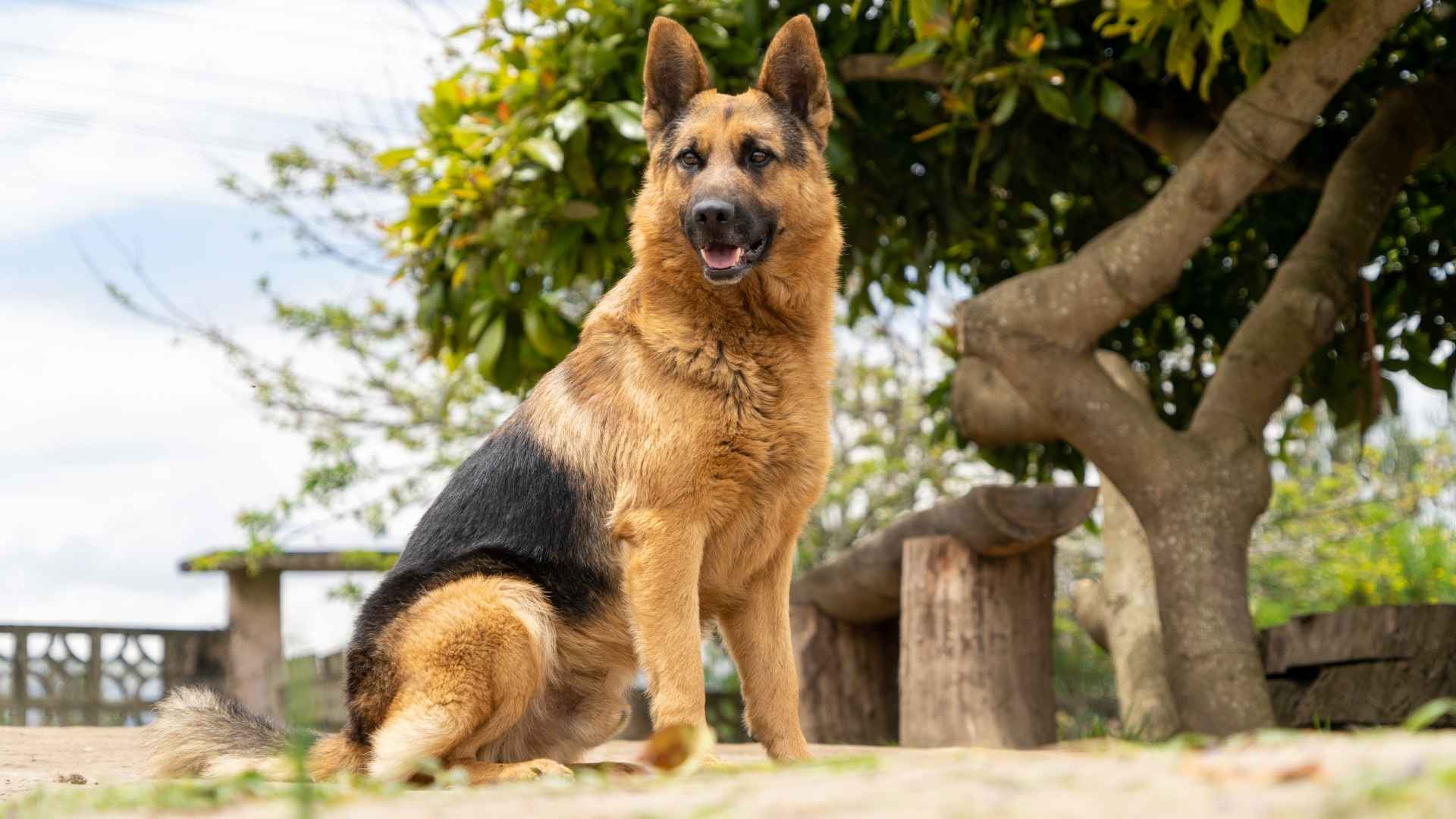For centuries, dogs have stood by our side—not just as loyal companions, but as hardworking partners ready to tackle tasks big and small. From guarding farms and herding flocks to aiding in rescue missions, certain breeds possess the strength, intelligence, and drive to work alongside humans with unmatched dedication. These are the dogs that thrive when they have a purpose, combining loyalty with a strong work ethic.
In the world of canines, “working dogs” refers to breeds specifically developed to assist humans in meaningful ways. They excel thanks to their sharp instincts, physical endurance, and adaptable personalities. Whether bred to pull sleds through harsh winters or protect livestock from predators, each working breed carries a legacy of service and skill.
If you’re searching for a dog that can be both a devoted family member and an eager teammate, the right working breed might be the perfect fit. This guide explores strong, capable breeds ready to lend a paw—helping you find a partner who’s as hardworking as they are loving.
Dog Breeds That Are Strong And Ready To Work With You
1. German Shepherd
Originating in Germany during the late 1800s, the German Shepherd—also known as the Alsatian—was initially bred for herding livestock but quickly proved its versatility in police, military, and service work. PetMD says that German Shepherds are energetic and enjoy having a job or another outlet for regular exercise.
Belonging to the Herding group, these large, powerfully built dogs stand 22–26 inches tall and weigh between 50–90 pounds. They possess a dense double coat, often in black and tan or sable, and are known for their intelligence, alertness, and courage. With a life expectancy of 12–14 years, they have become one of the most recognized and respected working breeds worldwide.
Ideal Owner
The German Shepherd thrives with active, committed owners who can provide both mental stimulation and physical activity. They excel with experienced handlers who understand structured training, early socialization, and the need for clear leadership.
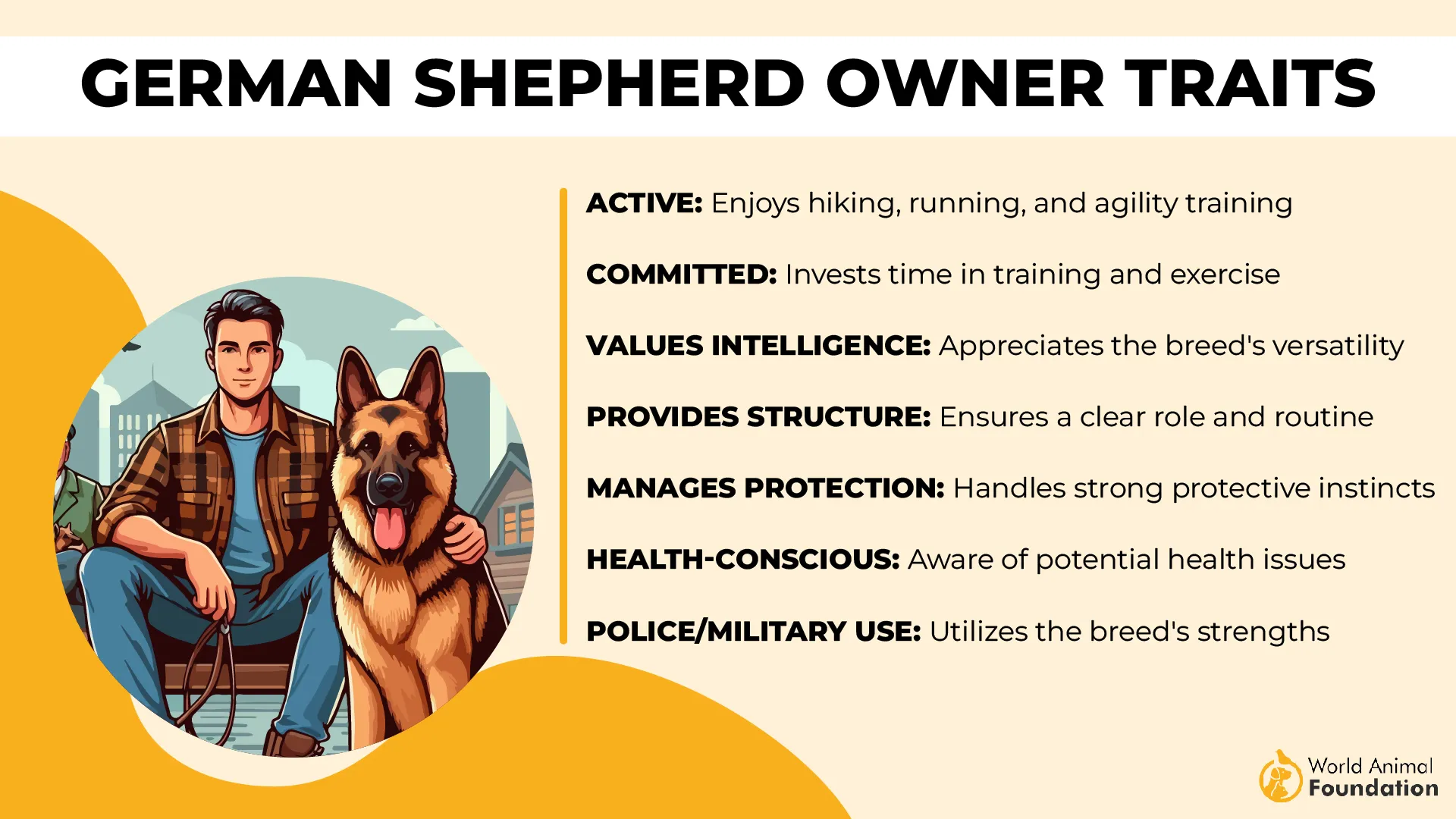
These dogs are best suited for households with space to roam and a willingness to engage in consistent exercise, whether through agility, obedience, or working tasks.
Families with older children or individuals seeking a dependable partner for service, protection, or farm work will find the German Shepherd a loyal and eager teammate.
Fun Fact: In 1990, a German Shepherd guide dog named Orient helped Bill Irwin become the first blind hiker to complete the Appalachian Trail.
2. Australian Cattle Dog
AKC says the compact yet muscular Australian Cattle Dog, also known as the Blue Heeler, Red Heeler, or Queensland Heeler, is related to Australia’s well-known wild dog, the Dingo. The Australian Cattle Dog, also known as the Blue Heeler, Red Heeler, Queensland Heeler, or simply “Heeler,” is a medium-sized, compact, and muscular herding breed developed in 19th-century Australia.
Standing 17–20 inches tall and weighing between 35–50 pounds, this agile worker was bred to endure the harsh Outback while moving cattle by nipping at their heels—a trait inherited from its Dingo ancestry.
Their dense, weather-resistant coat often features striking blue or red speckling, and their alert, intelligent expression hints at their quick-thinking nature. Highly trainable, protective, and brimming with stamina, they belong to the Herding Group and typically live 12–16 years.
Ideal Owner
This breed thrives with active individuals or families who can match its boundless energy and mental sharpness. They excel on farms, in homes with large, secure yards, or with owners committed to providing daily physical and mental challenges.
While they can be great with children, supervision is advised due to their natural herding instincts and tendency to nip. An ideal owner understands the importance of consistent engagement and plenty of opportunities for purposeful activity.
Fun Fact: An Australian Cattle Dog named Bluey holds the Guinness World Record for the oldest dog ever, living an astounding 29 years and 5 months.
3. Belgian Malinois
Also known as the “Mal,” the Belgian Malinois originated in the late 1800s in the Mechelen (Malines) region of Belgium. WebMD says Belgian Malinois are intelligent and easy to train.
Initially bred for herding, their exceptional stamina and trainability quickly made them invaluable in law enforcement and military operations. Males typically stand 24–26 inches tall and weigh 60–80 pounds, while females measure 22–24 inches and weigh 40–60 pounds.
They boast a short, dense coat ranging from fawn to mahogany with black-tipped hairs, and a distinct black mask and ears. Renowned for their agility and strong work ethic, they belong to the Herding Group and have a lifespan of about 14–16 years.
Ideal Owner
The Belgian Malinois thrives with experienced owners who can provide daily physical challenges and mental engagement. They’re not well-suited for apartment living, as they require space to run and tasks to perform.
Best matched with active individuals or families who can commit to structured training and plenty of stimulating activities such as obedience work, agility, or protection sports. Without sufficient engagement, they may channel their high energy into undesirable behaviors.
Fun Fact: A Belgian Malinois named Cairo famously assisted the Navy SEAL team during the 2011 mission that resulted in the death of Osama bin Laden.
4. Doberman Pinscher
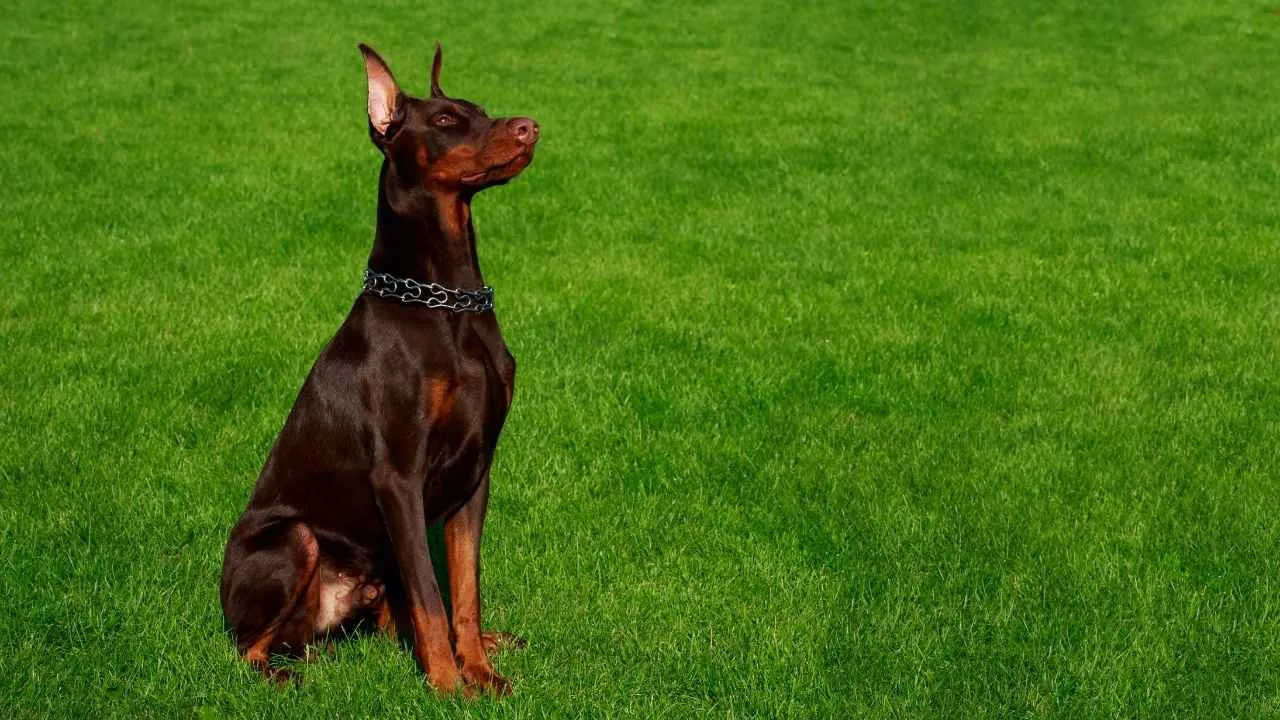
Sleek, powerful, and remarkably intelligent, the Doberman Pinscher—also called the Doberman, Dobie, or Dobe—was developed in Apolda, Germany, in the late 1800s by Karl Friedrich Louis Dobermann. Originally bred as a guard and protection dog, the Doberman quickly earned a reputation for loyalty, vigilance, and courage.
Standing 24–28 inches tall and weighing between 60–100 pounds, these guard dogs possess a short, smooth coat in black, blue, fawn, or red, accented with rust markings on the head, chest, legs, and tail base.
With an elegant, muscular build and an alert, almond-eyed expression, they are part of the Working Group and typically live 10–12 years.
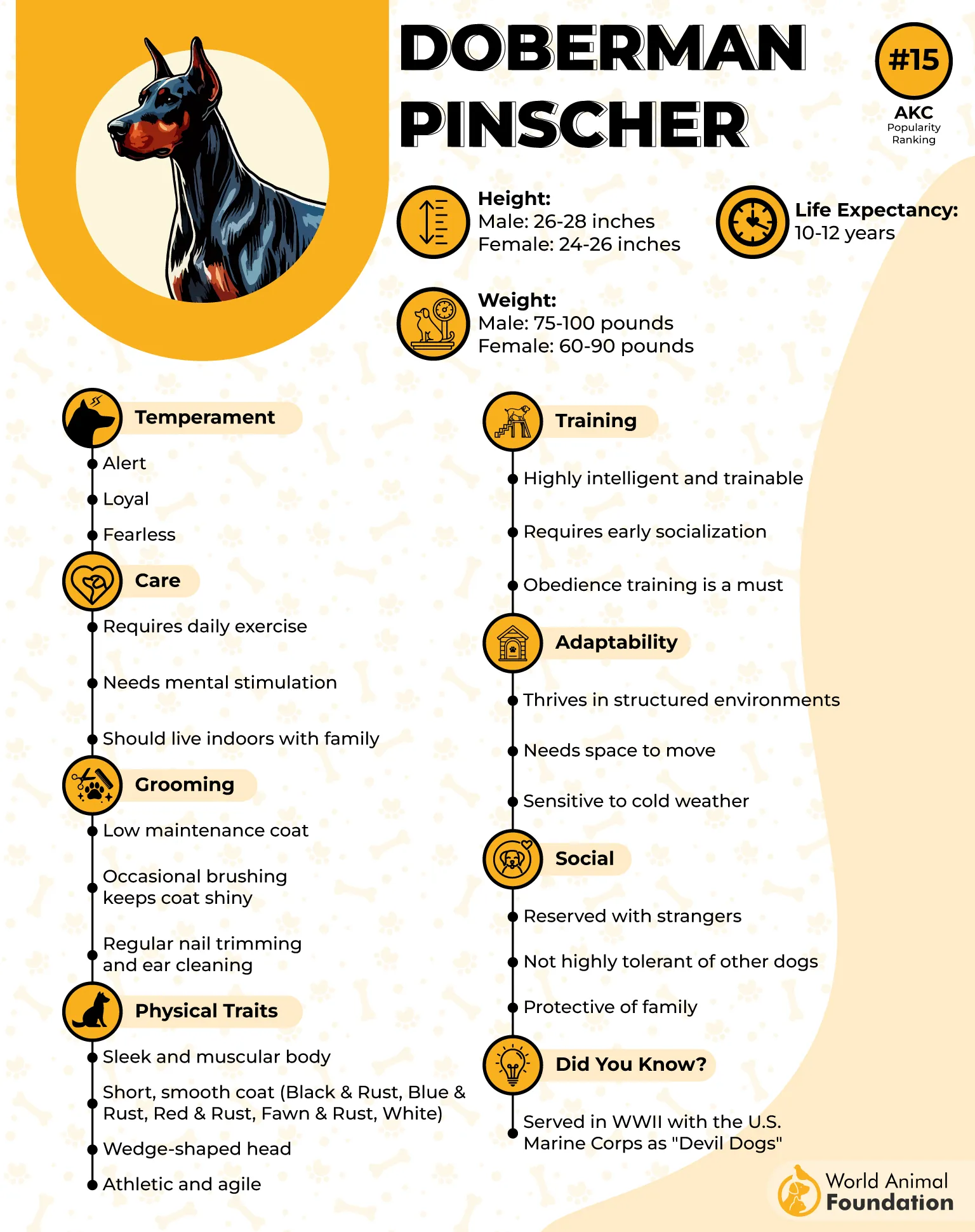
Ideal Owner
Doberman Pinschers thrive under confident, experienced owners who can provide consistent training, firm leadership, and plenty of mental and physical engagement.

Their high intelligence and sensitivity mean they quickly pick up on hesitation, so owners must be decisive and calm. Best suited for active individuals or families committed to daily exercise and interaction, Dobies excel when given both a job to do and affection to enjoy.
Fun Fact: A bronze memorial in Guam honors the Dobermans who served alongside U.S. Marines in World War II—including “Kurt,” the first canine casualty during the Battle of Guam in 1944.
5. Siberian Husky
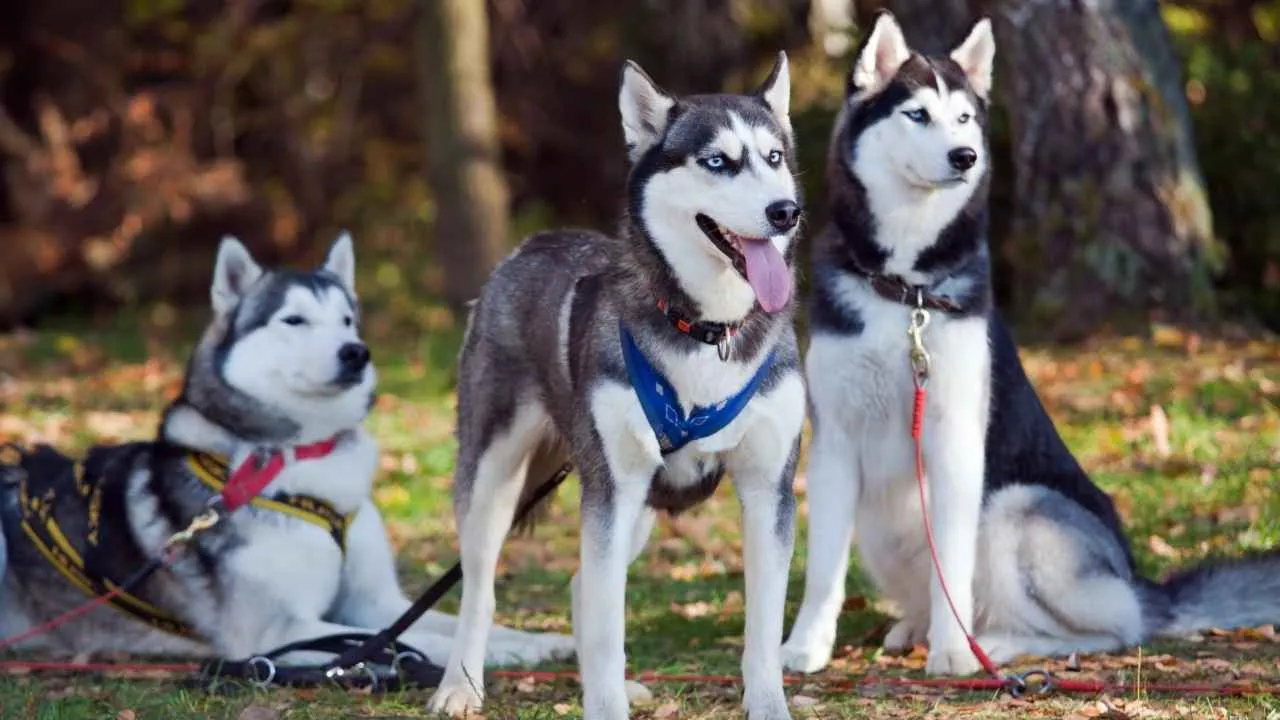
The Siberian Husky, also known as the Sibe or Chukchi dog, is a medium-sized working breed renowned for its endurance, grace, and striking wolf-like appearance. Originating in Siberia, these dogs were bred by the Chukchi people to pull sleds over long distances in freezing conditions.
Introduced to Alaska in 1909 for sled races, Huskies quickly proved their athleticism and resilience. Standing 20–24 inches tall and weighing 35–60 pounds, they have a thick double coat, erect triangular ears, and bright eyes that may be blue, brown, or even bi-colored.
With a life span of 12–14 years, they belong to the Working Group and are celebrated for their agility, stamina, and friendly nature. Their history includes the legendary 1925 “Great Race of Mercy,” when teams of Huskies transported life-saving serum to Nome, Alaska.
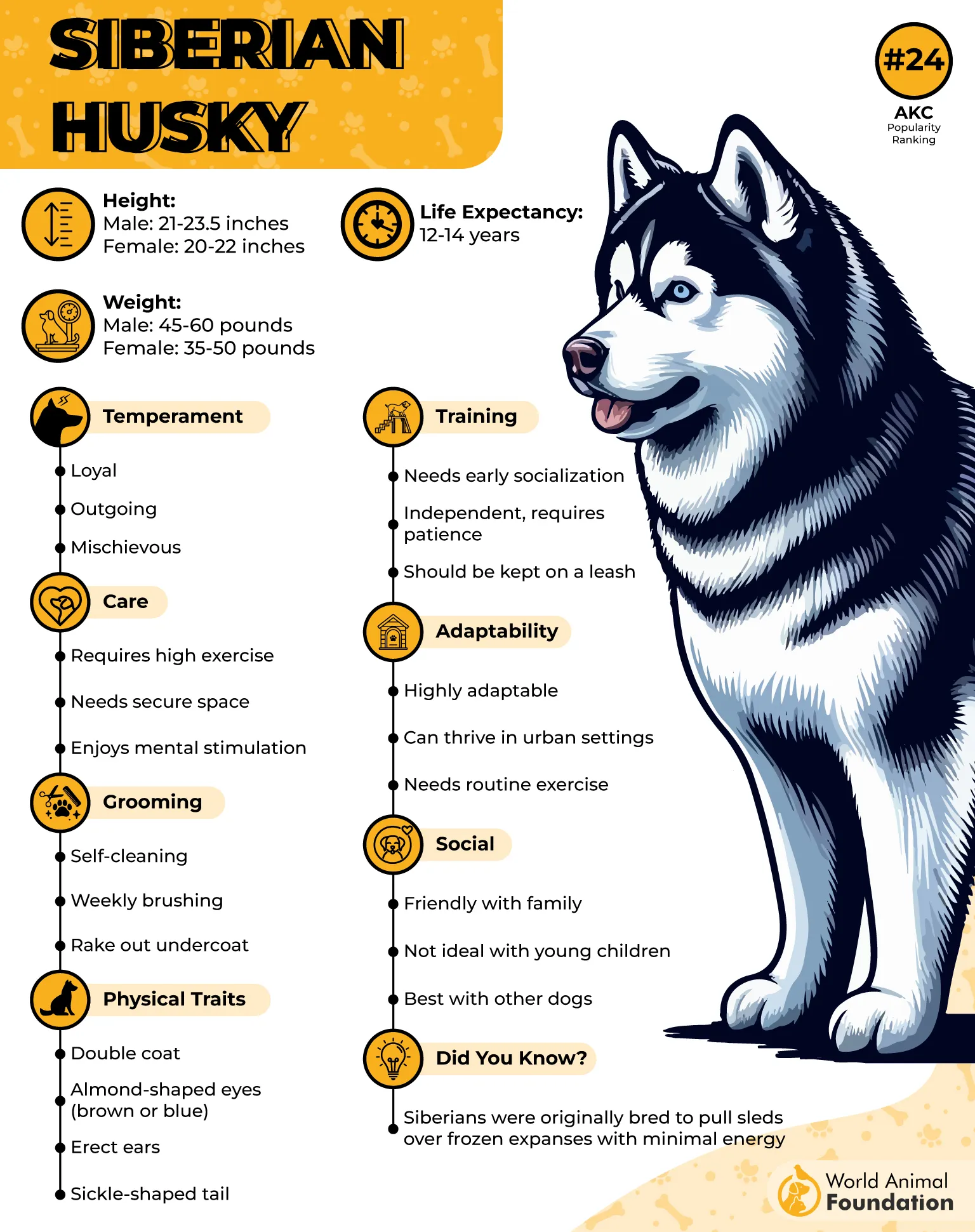
Ideal Owner
The ideal Siberian Husky owner is active, experienced with larger spitz-type breeds, and ready to provide ample mental and physical stimulation. A spacious home and secure yard are essential, as Huskies are skilled escape artists.
They thrive with owners who can dedicate significant time to training, socialization, and exercise, while also managing their heavy shedding with regular grooming. Patience, consistency, and a sense of adventure are key traits for anyone sharing life with this energetic, independent dog.
Fun Fact: In 2023, a genetic study of Balto, the famous sled dog from the 1925 serum run, revealed he shared ancestry with Tibetan Mastiffs, Greenland sled dogs, and dogs from Vietnam—contributing to his remarkable resilience in Arctic conditions.
6. Boxer
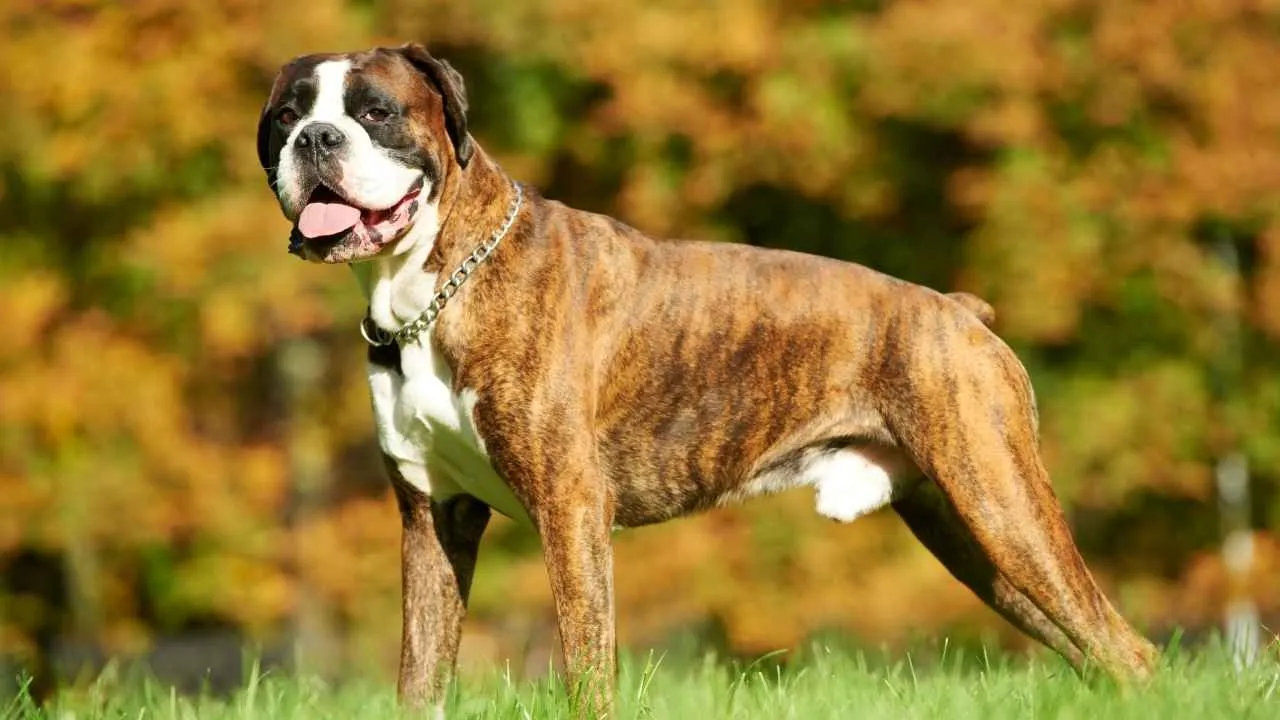
Also known as the Deutscher Boxer, this strong, squarely built working breed hails from Germany, with lineage tracing back to the ancient Assyrian Molossian dogs. Standing 21–25 inches tall and weighing between 65–80 pounds, Boxers have a short, smooth coat—typically fawn or brindle with a distinctive black mask—and an expressive face often marked by endearing wrinkles.
Originally bred in the late 19th and early 20th centuries from the now-extinct Bullenbeisser and other breeds, these companion dogs were developed to pursue and hold large game such as boar and bison.
Over time, their athleticism, courage, and versatility earned them roles as police dogs, war dogs, cattle herders, and even guide dogs. Life expectancy averages 10–12 years.
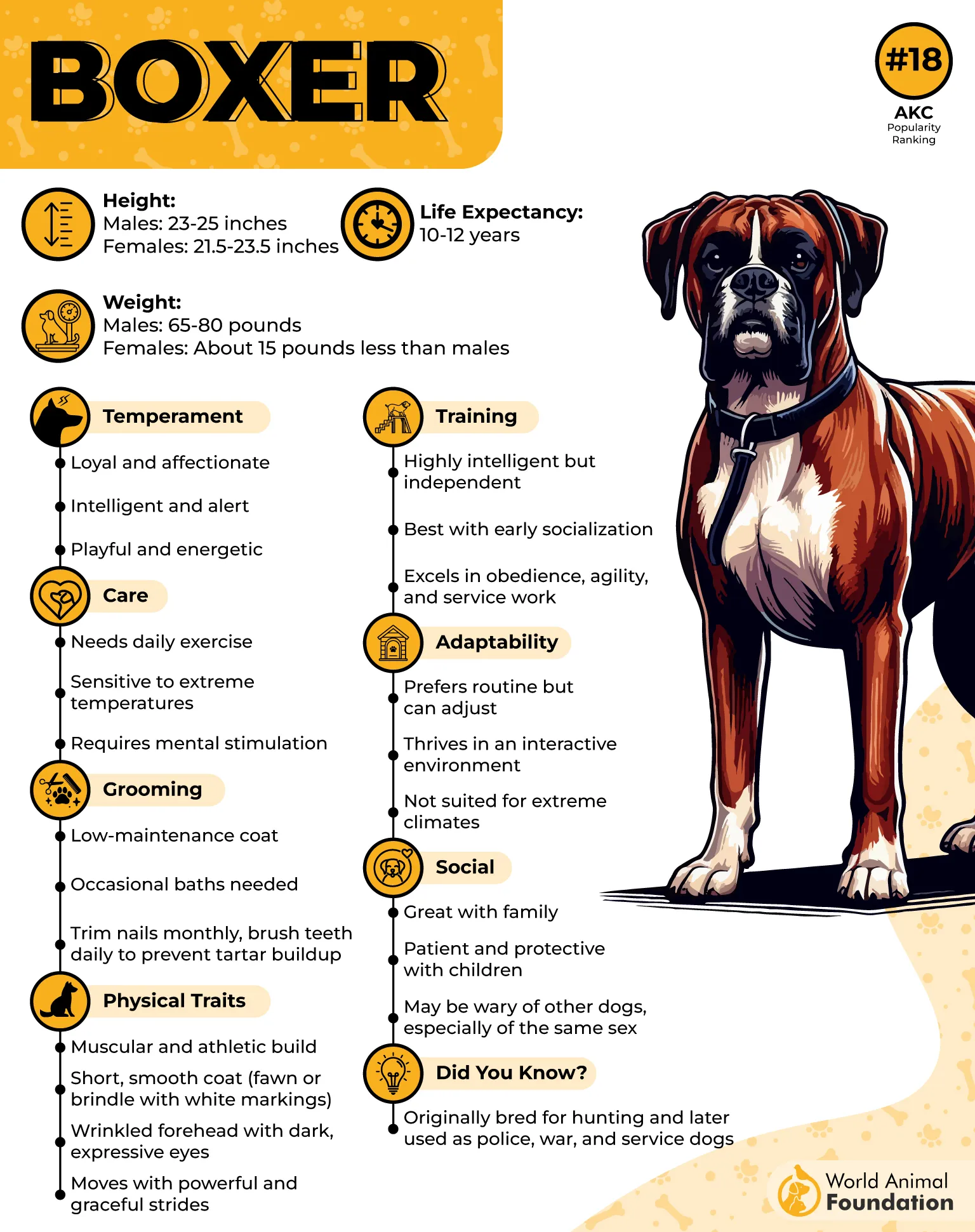
Ideal Owner
These herding dogs thrive with active individuals or families who can match its boundless energy and desire for companionship. They are happiest when included in daily activities and need ample opportunities to run, play, and engage their sharp minds.
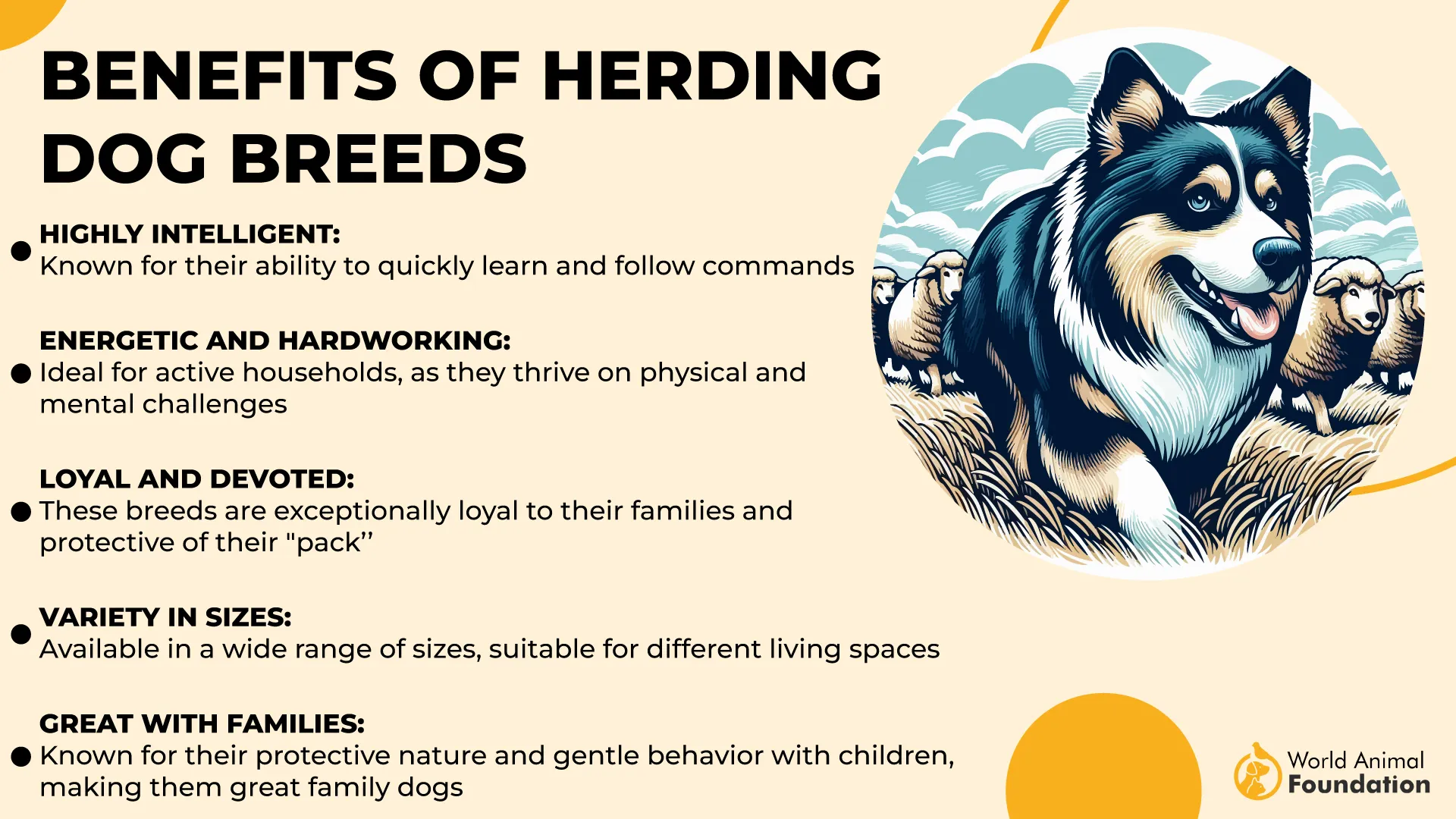
While they adapt to both spacious homes and apartments, regular exercise is non-negotiable. Families with older children or experienced dog owners who appreciate training, structure, and affectionate interaction will find the Boxer a devoted partner.
Fun Fact: Hollywood icons Humphrey Bogart and Lauren Bacall were so fond of Boxers that they received one as a wedding gift in 1945, naming him Harvey after the famous invisible rabbit.
7. Bloodhound
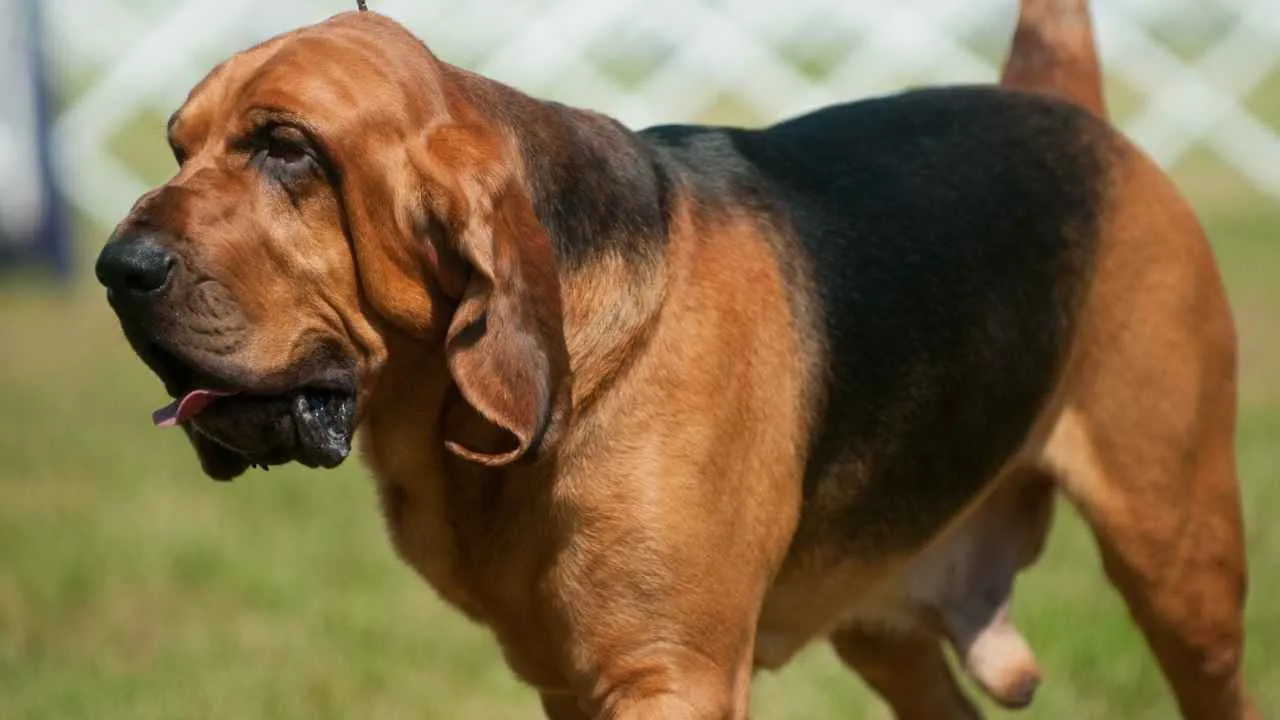
The Bloodhound, also known as the St. Hubert Hound, is a legendary scent-tracking breed with roots tracing back to the monastery of St. Hubert in Belgium. Renowned as the world’s foremost “Sleuth Hound,” it can follow a scent trail for miles with unwavering determination.
Standing 23–27 inches tall and weighing between 80–110 pounds, this hound has a distinctive appearance—long, pendulous ears, deeply wrinkled skin around the face, and soulful hazel to yellow eyes. Its short, dense coat comes in black-and-tan, red-and-tan, or tawny.
Calm and affectionate when off duty, the Bloodhound transforms into an unstoppable tracker when on a scent, a skill so reliable that its evidence is admissible in court.
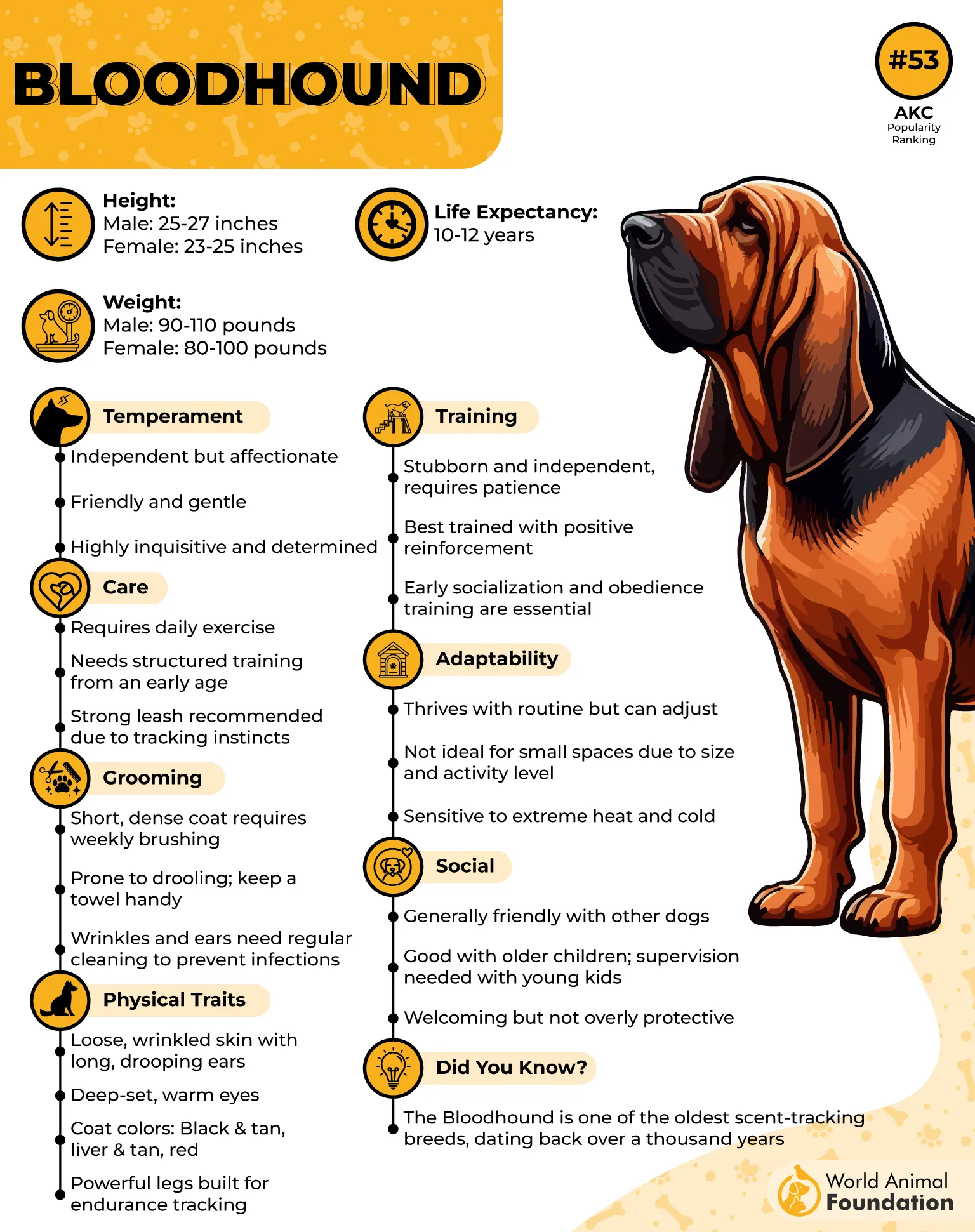
Ideal Owner
Best suited to an active, patient handler, these search and rescue dogs thrive with someone who understands their independent streak and powerful nose. Owners should provide firm yet gentle training, using positive reinforcement to channel their determination productively.
A spacious environment, regular exercise, and mental challenges are essential to keep this companion dog engaged. Those with experience in scent work, search-and-rescue, or who can offer ample outdoor exploration will find an eager and loyal partner in the Bloodhound.
Fun Fact: The Bloodhound’s sense of smell is so precise that it can follow a scent trail over 130 miles old.
Conclusion
In the dog world, working dog breeds have long been valued for their intelligence, loyalty, and readiness to take on challenging roles. From service dogs aiding those in need to therapy dogs bringing comfort and joy, these remarkable canines prove that a strong work ethic and a loving nature can go hand in hand. While the breeds covered in this guide excel in their own fields, other dogs like the Bernese Mountain Dog and Border Collies also shine, whether helping herd livestock or serving as great family dogs.
Beyond the spotlight, there are gentle giants like Labrador Retrievers and steadfast protectors fit to be a bodyguard dog, each offering unique strengths and personalities. The beauty of a working dog breed lies in its ability to adapt—whether pulling loads, guiding the visually impaired, or providing emotional support. In the end, these versatile companions are more than just pets; they are devoted partners ready to work with you every step of the way.


